Even if its not as fast as the elites this small increase will still improve your running performance and reduce your chance of injury² And like anything with running its crucial you take it. Ideally well have variations in your cadence so your easy running might be at 160 and your quicker running might be 165.
 Running Cadence What Is It And Why You Need To Know About It Run Life
Running Cadence What Is It And Why You Need To Know About It Run Life
For decades weve been told that 180 steps per minute SPM is the ideal cadence for runninga number that legendary running coach Jack Daniels.
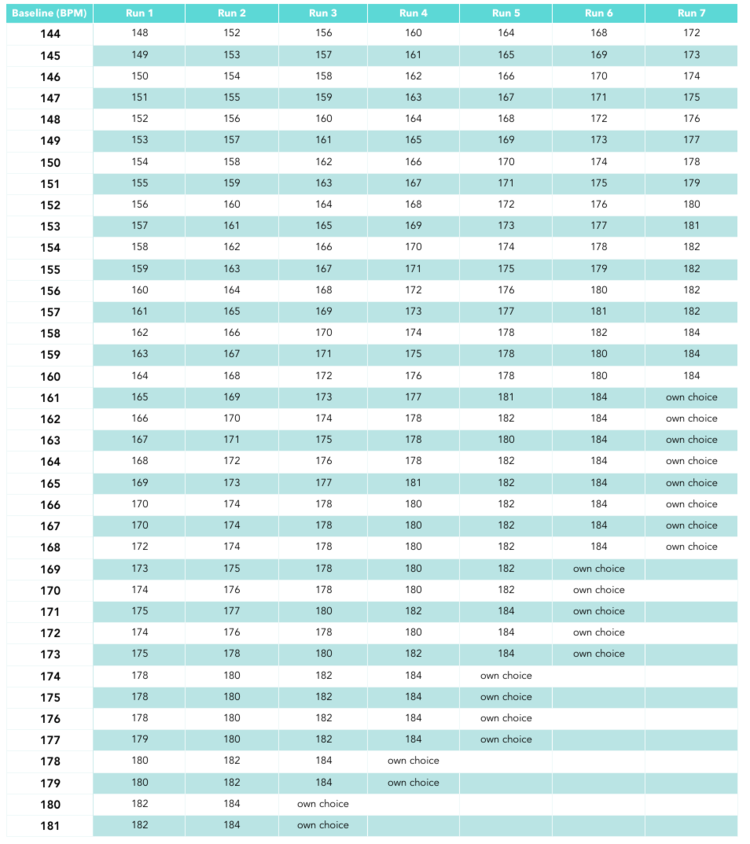
What is a good cadence for running. I show how I improved my 5k time from 2453 to 2047 over 6 months in 2018 180 improvement 406 minutes faster. Running cadence is a very close relative of good running form since quick turnover means as little ground contact as possible. Contrary to popular belief in most running circles there is no such a thing as an ideal universal running cadence.
At the same pace a lower cadence means that larger steps are taken. Count each left foot attachment for 60 seconds and double the value obtained to obtain the cadence per minute. Running cadence also known as a runners rhythm can be quite simply defined as the turn over rate of the feet or legs.
It is commonly expressed as revolutions per minute in either total or single steps. What determines my running cadence. Good runners usually have a higher cadence because they usually go faster than beginners.
A large proportion of amateur athletes have a slow running cadence taking fewer steps per minute. Introduction This article discusses cadence and stride length for 5k races. For most of us on a typical medium intensity run that natural groove will fall somewhere between 82 and 90 strides per minute.
Top marathoners typically run with a cadence above 90 whereas most beginners will run at 7882. While this increase in cadence from 80 to 90 steps per minute may not seem like much if the runner is able to maintain the same stride length it can represent a large change in overall speed. Basic Running Math At its core running a 5K race is simple.
The average runner will have a cadence of 150 to 170 SPM Steps Per Minute while the fastest long-distance runners are up in the 180 to 200 SPM range. For example if your base running cadence is 162 SPM your goal cadence should be between 170-178 SPM. 160 if your easy pace is slower than 10-minutes per mile.
It varies based on speed and is slightly different based on each individual runners mechanics height strength and mobility. How Stride Length Affects Your Cadence and Form. 170 if your easy pace is faster than 10-minutes per mile.
Adjust your cadence gradually and take advantage of wearable technology for accurate step rate analysis. Remember that there is no such thing as the best running cadence. What is a good running cadence number.
According to conventional thinking a good running cadence is roughly 180 steps per minute. For decades now weve been told that 180 steps per minute SPM is the ideal cadence for runninga number that legendary running coach Jack Daniels. Your running cadence is determined by your training history running ability and anatomy.
But here is the truth. Given that most runners regardless of ability level select a cadence lower than optimum increasing cadence for any given pace is a good idea. However you may find that there is no real variation in cadence that gives you even more scope to work in.
But the research suggests that if we want to run faster then we should be striving to run with a higher cadence and therefore taking more steps per minute. The good news is that as you improve your cadence you will simultaneously be correcting your overstriding. Good runners usually have a higher cadence because they usually go faster than beginners.
The other is stride length. Cadence is one of the two factors that make up a runners speed. Most recreational runners will have a cadence between 150 to 170spm strides per minute topping out at 180spm 2.
Since most injuries are impact related cadence improvement becomes essential to the progression of the runner. Its worth noting that these numbers are typically maintained in shorter-distance endurance races and full marathons. The more the center of mass COM moves up and down in.
But there are appropriate ranges. To read about steps and stride length for sprinters see also my article on Sprinting Math - Steps and Step Length. Burnss grand overall model tried to predict each runners cadence based on every piece of data availablespeed height weight age experience and so.
The Origins Of The 180spm Myth. A cadence of less than 160spm is usually seen in runners who overstride. In general most running coaches would agree that an optimal running cadence for longer distance running 5 km would be around 90 steps per minute or slightly higher.
This is a good sign. There is a running cadence a number of strides per minute that feels right for you the groove you naturally land in when you lace up the shoes and head out. Top marathoners typically run with a cadence above 90 whereas most beginners will run at 7882.
Another benefit of quickening the cadence of a developing runner is a reduction in metabolic cost. The running speed is basically the multiplication of the cadence and the stride length.
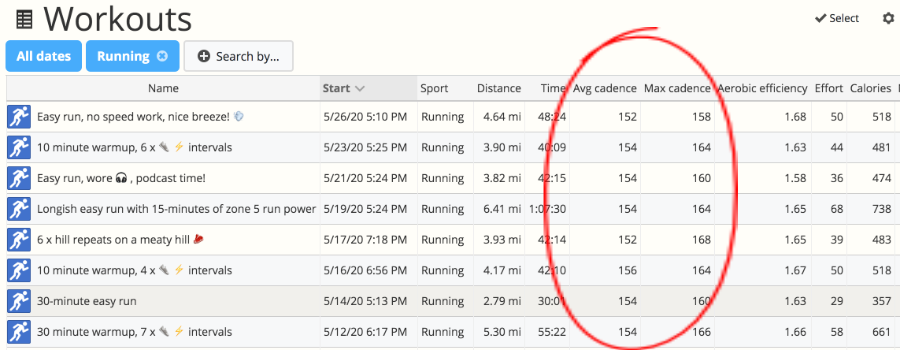 What Is Good Running Cadence How To Fully Utilize Fitness Tech To Train With Cadence Sporttracks
What Is Good Running Cadence How To Fully Utilize Fitness Tech To Train With Cadence Sporttracks
 Improve Your Running Technique My Running Addiction
Improve Your Running Technique My Running Addiction
 How Does Cadence Affect Injury And Performance
How Does Cadence Affect Injury And Performance
 Running Cadence What S The Ideal Stride Turnover How To Improve It
Running Cadence What S The Ideal Stride Turnover How To Improve It
Running Cadence Saiyanfit Blog
 How Running Cadence And Stride Length Affect Our Runs Tgr
How Running Cadence And Stride Length Affect Our Runs Tgr
 Blog How To Improve Your Running Cadence
Blog How To Improve Your Running Cadence
 Finding Your Perfect Run Cadence Trainingpeaks
Finding Your Perfect Run Cadence Trainingpeaks
 Report The Impact Of Running Cadence On Running Economy Ecor And Re Trainingpeaks
Report The Impact Of Running Cadence On Running Economy Ecor And Re Trainingpeaks
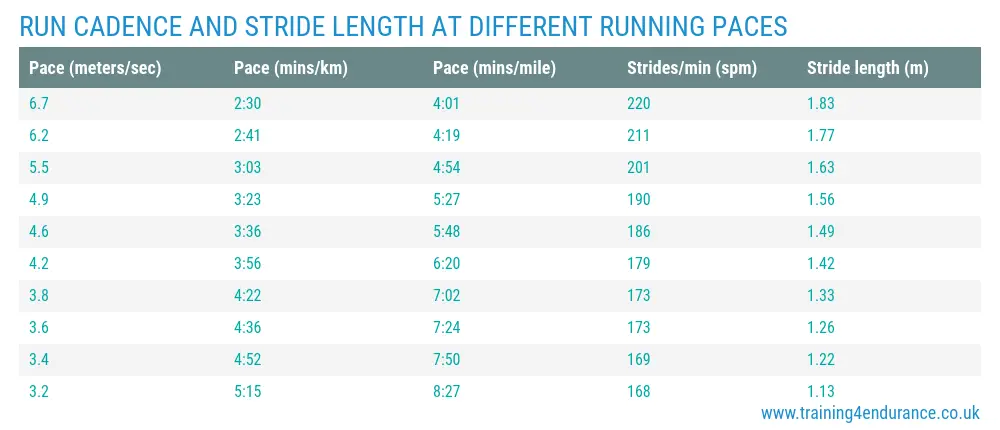 What Is Running Cadence And How Can You Increase It
What Is Running Cadence And How Can You Increase It
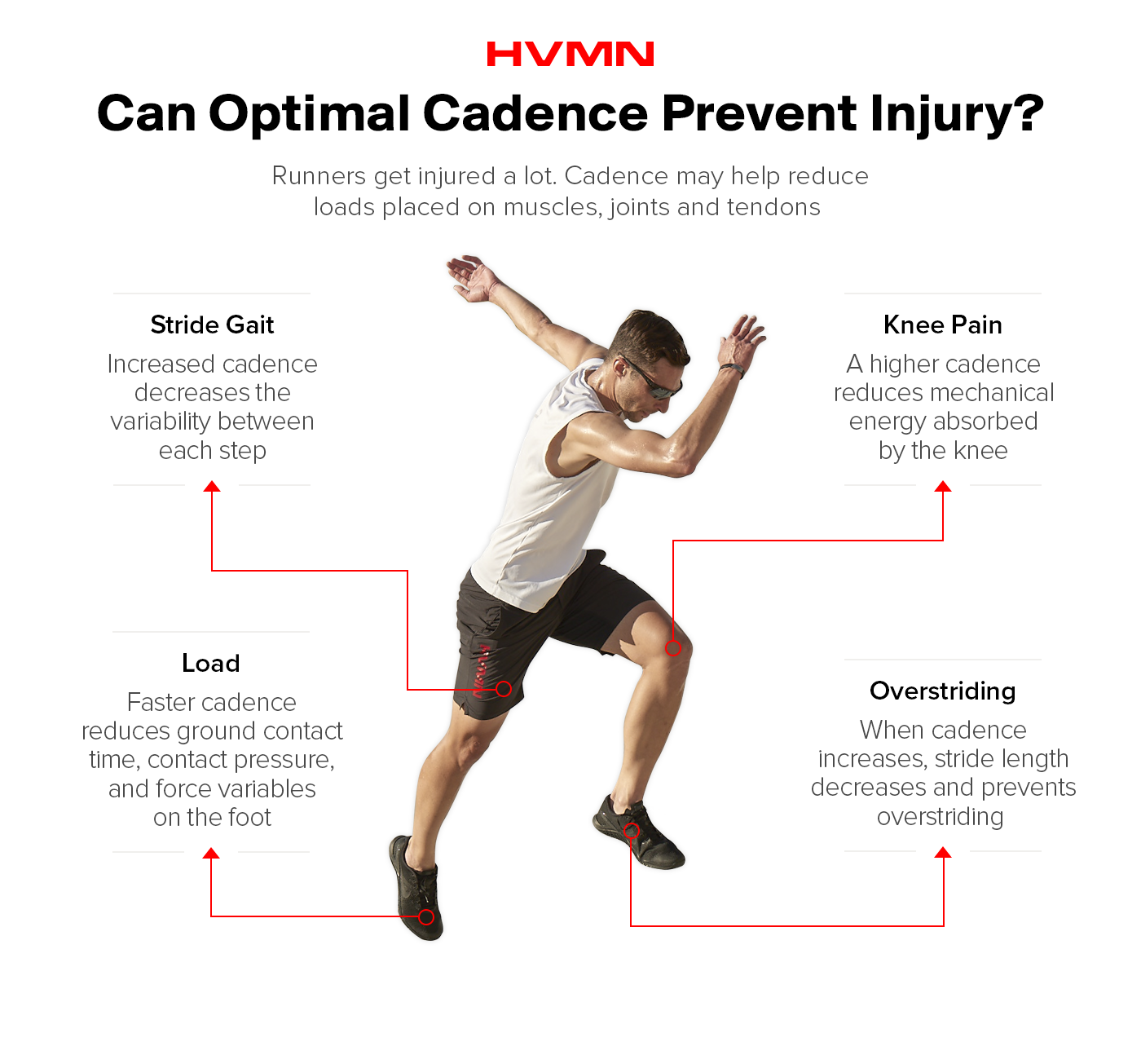 Optimize Running Cadence To Improve Performance H V M N Blog
Optimize Running Cadence To Improve Performance H V M N Blog
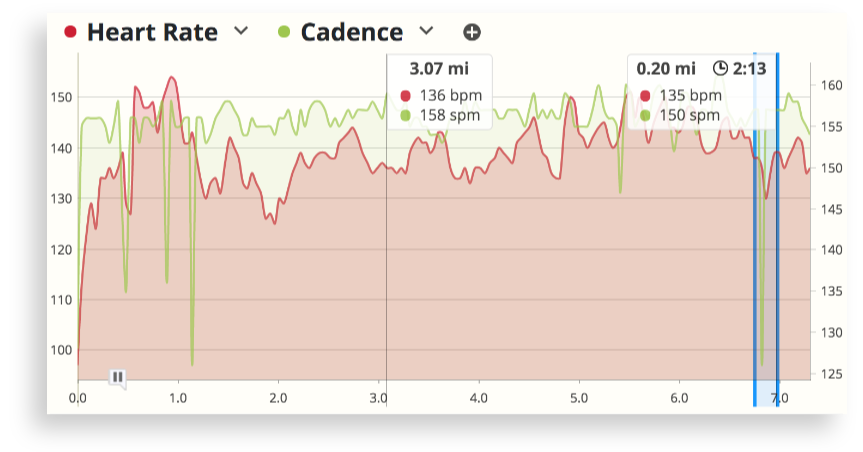 What Is Good Running Cadence How To Fully Utilize Fitness Tech To Train With Cadence Sporttracks
What Is Good Running Cadence How To Fully Utilize Fitness Tech To Train With Cadence Sporttracks
 4 Simple Steps To Improve Your Cadence To Prevent Overstriding
4 Simple Steps To Improve Your Cadence To Prevent Overstriding
 Chart To Study Pace Mechanics Of Cadence Vs Stride Advancedrunning
Chart To Study Pace Mechanics Of Cadence Vs Stride Advancedrunning

Keine Kommentare:
Kommentar veröffentlichen
Hinweis: Nur ein Mitglied dieses Blogs kann Kommentare posten.